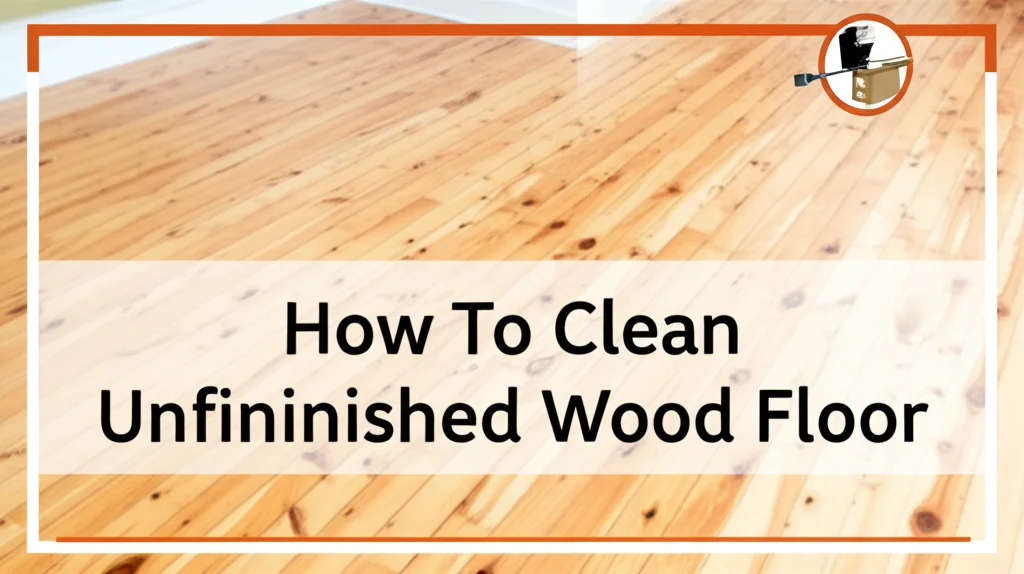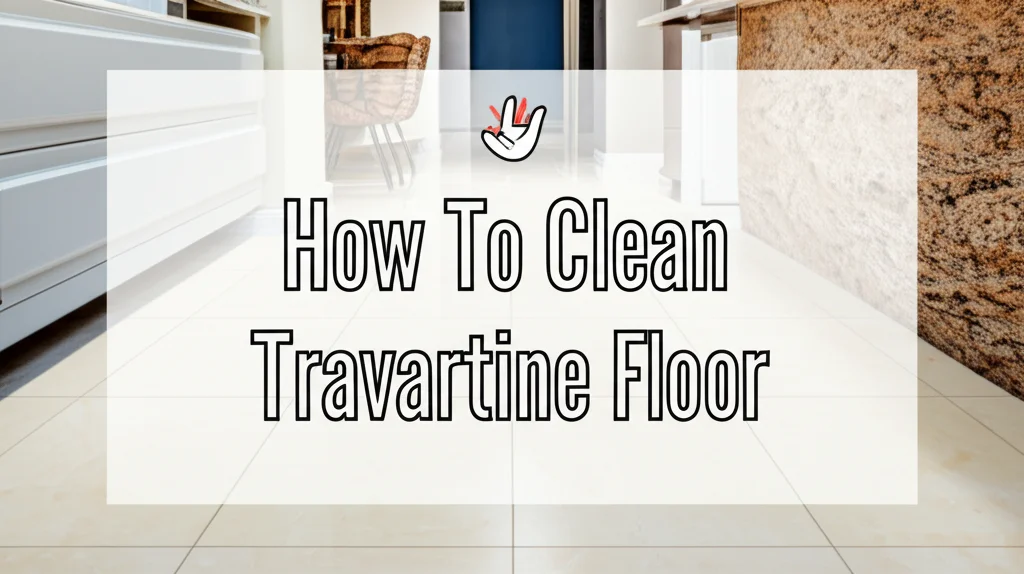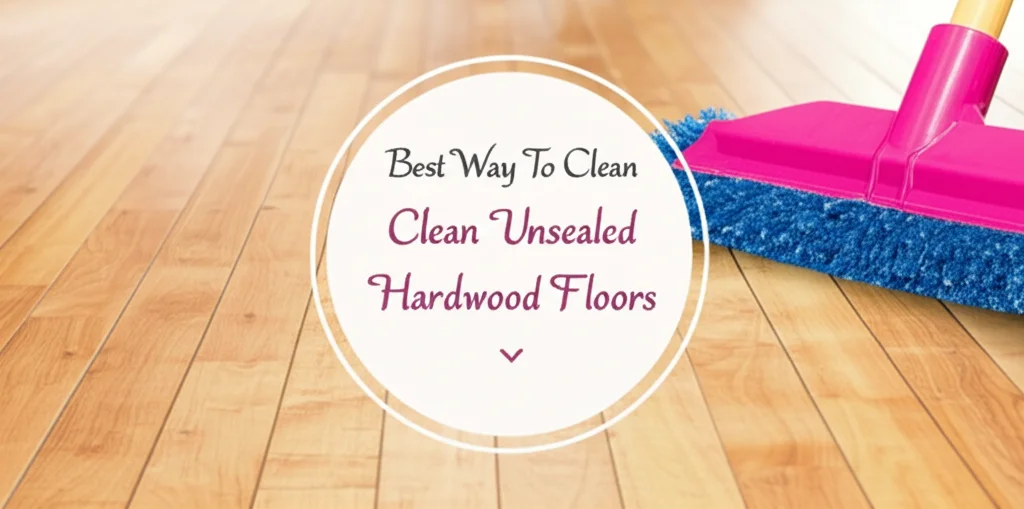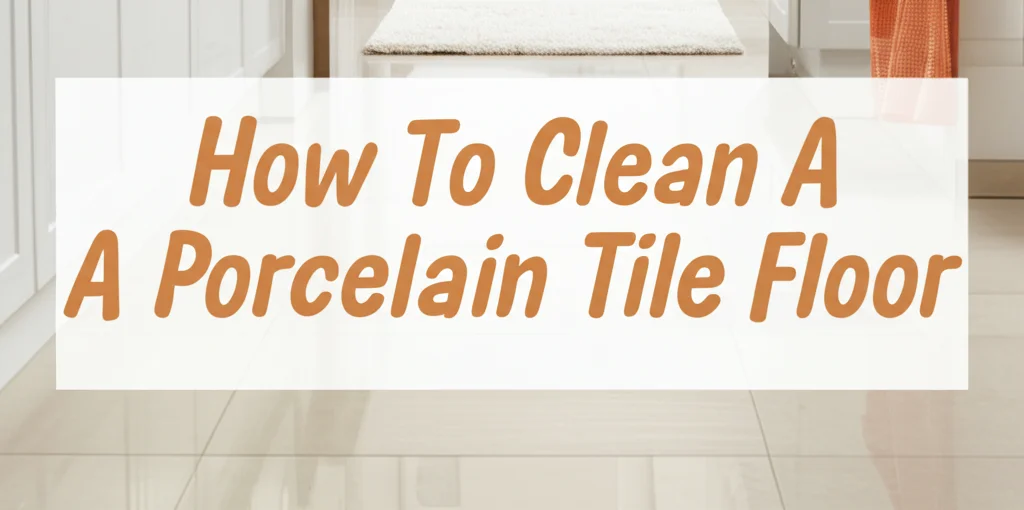· Flooring · 10 min read
How To Clean 100 Year Old Wood Floors
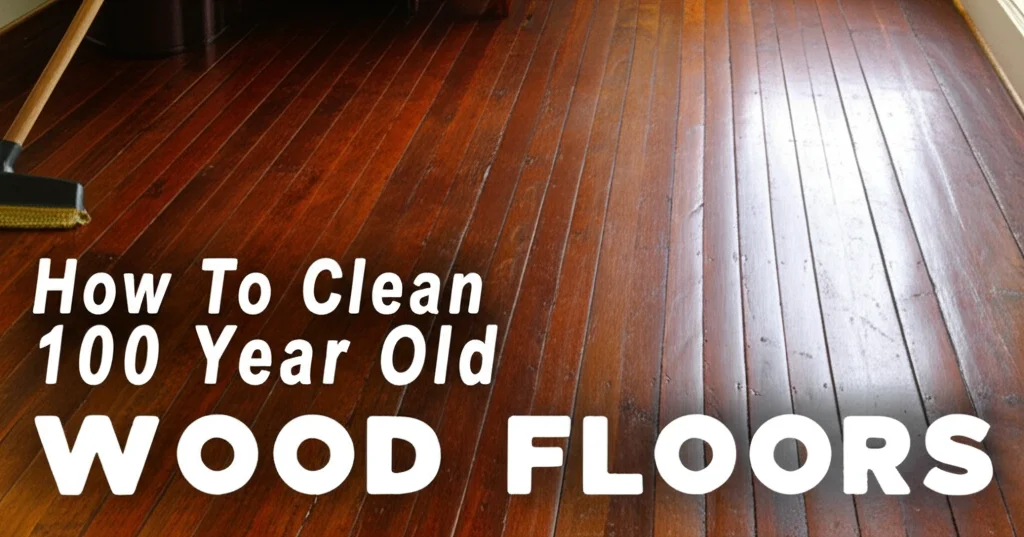
How to Clean 100-Year-Old Wood Floors: The Ultimate Care Guide
Historic hardwood floors are treasures that deserve special care. If you’re fortunate enough to have century-old wood floors in your home, understanding how to clean 100-year-old wood floors properly is essential to preserving their beauty and integrity for years to come. These vintage floors require gentler methods than their modern counterparts, but with the right approach, you can maintain their character while keeping them clean and beautiful.
Key Takeaways:
- Use gentle, pH-neutral cleaners specifically formulated for old wood
- Always test cleaning solutions on an inconspicuous area first
- Avoid excessive moisture and harsh chemicals
- Regular maintenance prevents the need for deep cleaning
- Consider the finish (or lack thereof) when choosing cleaning methods
Quick Answer: To clean 100-year-old wood floors, sweep or vacuum regularly, then mop with a barely damp microfiber mop using a mild solution of pH-neutral cleaner. Avoid excess water, harsh chemicals, and abrasive tools that can damage antique wood.
Understanding Your Century-Old Wood Floors
Before diving into cleaning methods, it’s important to understand what makes 100-year-old wood floors different from modern ones. Historic hardwood floors from the early 1900s were typically made from old-growth timber, which is denser and more durable than today’s faster-grown wood. These floors often feature distinctive grain patterns and natural color variations that can’t be replicated in modern flooring.
The most critical difference, however, is in the finish. Many century-old floors have either:
- Original shellac or varnish finishes (often worn thin in places)
- Oil-based finishes that have aged and oxidized
- No finish at all (bare wood that’s been worn smooth over decades)
- Wax finishes that have built up over time
Identifying your floor’s finish will determine the appropriate cleaning methods. Older finishes are typically more delicate and water-sensitive than modern polyurethane. In many homes built around 1910, hardwood floors may have inconsistent finishes across different areas due to wear patterns and previous repairs.
If you’re uncertain about your floor’s finish, perform a simple test: In an inconspicuous area, place a few drops of water on the surface. If it beads up, your floor likely has some protective finish. If it soaks in quickly, your floor is probably unfinished or has a worn finish that needs special care.
Essential Tools for Cleaning Antique Wood Floors
The right equipment is crucial when cleaning century-old wood floors. Here’s what you’ll need:
- Soft-bristled broom or microfiber dust mop for daily cleaning
- Vacuum with a floor brush attachment (no beater bar)
- Microfiber mop with a wringing mechanism
- Spray bottle for controlled application of cleaning solutions
- Soft, absorbent cloths for spot cleaning and drying
- pH-neutral wood floor cleaner specifically formulated for older floors
- Small bucket for diluting cleaners
Avoid steam mops, wet mops, and scrub brushes, as these can damage antique wood. The goal is gentle cleaning that removes dirt without harming the wood or its aging finish.
Daily and Weekly Maintenance for Historic Floors
Regular maintenance is the cornerstone of proper care for 100-year-old wood floors. A consistent cleaning routine prevents dirt and grit from scratching the surface and reduces the need for more intensive cleaning methods.
Daily Care
- Remove shoes at the entrance to minimize dirt and grit
- Use area rugs in high-traffic zones to protect the wood
- Sweep or dust mop daily to remove surface particles
- Wipe up spills immediately to prevent water damage and staining
Weekly Cleaning
- Begin by thoroughly sweeping or dust mopping the entire floor
- Vacuum using a floor brush attachment to remove dust from cracks and crevices
- For general cleaning of sealed areas, lightly mist a microfiber mop with a solution of water and a few drops of pH-neutral cleaner
- Work in small sections, immediately wiping dry with a clean cloth
- Pay special attention to high-traffic areas that may need more frequent attention
Remember that the key to maintaining antique wood floors is gentle, consistent care. By preventing buildup of dirt and grime, you’ll rarely need to resort to more intensive cleaning methods that could potentially damage your historic floors.
How to Clean 100-Year-Old Wood Floors Naturally
Many homeowners prefer to clean their antique wood floors using natural methods that avoid harsh chemicals. Natural cleaning approaches are particularly suitable for old wood floors that may have more porous surfaces or worn finishes.
DIY Natural Cleaners
Here are some effective natural cleaning solutions for 100-year-old wood floors:
Basic Tea Solution
- Brew 2-3 black tea bags in 2 cups of hot water
- Allow to cool completely
- Apply with a barely damp cloth and buff dry
- The tannic acid in tea gently cleans while adding subtle color to the wood
Vinegar Solution (for sealed floors only)
- Mix 1 cup white vinegar with 1 gallon warm water
- Dampen a microfiber mop very lightly with the solution
- Wipe dry immediately afterward
- Note: Test this solution in an inconspicuous area first, as vinegar can damage some old finishes
Vegetable Oil and Vinegar Polish
- Combine 2 parts vegetable oil with 1 part white vinegar
- Apply sparingly with a soft cloth, rubbing with the grain
- Buff with a clean cloth until no residue remains
- Ideal for unfinished or oil-finished floors
When using natural cleaners on historic floors, remember:
- Less is more—use minimal moisture
- Test in an inconspicuous area first
- Dry the floor immediately after cleaning
- Avoid citrus oils on old finishes as they can be too harsh
Natural cleaning methods work well for how to clean unfinished wood floor situations, which are common in homes with century-old flooring.
Deep Cleaning Methods for Neglected Historic Floors
Sometimes, especially when moving into an older home, you may encounter 100-year-old wood floors that have been neglected or hidden under carpeting for decades. These situations call for more thorough cleaning approaches while still protecting the integrity of the antique wood.
For Moderately Dirty Floors
- Start with a thorough vacuuming to remove all loose debris
- Clean with a commercial cleaner designed specifically for old wood floors
- For stubborn areas, use a slightly more concentrated cleaning solution
- Work in small sections (3x3 feet) to ensure the solution doesn’t sit too long
- Dry each section completely before moving to the next
For Severely Neglected Floors
- Begin with mineral spirits on a soft cloth for areas with built-up grime
- Use fine #0000 steel wool with a small amount of mineral spirits for stubborn residue
- Follow with a thorough cleaning using a pH-neutral wood cleaner
- Buff dry with soft cloths
Removing Carpet Adhesive and Residue
If your floors were previously carpeted, you may need to deal with adhesive residue:
- Apply ice to harden brittle adhesives, then gently scrape with a plastic putty knife
- For stubborn adhesive, apply a small amount of adhesive remover designed for wood
- Work in very small areas and immediately wipe clean
- Follow with a neutral cleaner to remove any residue
Learning how to clean old hardwood floors that have been under carpet can be challenging, but patience and gentle methods will yield beautiful results.
Special Challenges of Unsealed Wood Floors
Many 100-year-old wood floors either were never sealed or have had their sealant wear away over decades. Unsealed wood is particularly vulnerable to moisture damage, staining, and wear. Cleaning these floors requires extra caution.
Identifying Unsealed Floors
- Water droplets soak in rather than bead up
- Surface feels rough or porous to the touch
- Wood has a matte rather than glossy appearance
- Stains penetrate easily
Cleaning Methods for Unsealed Wood
- Vacuum thoroughly with a soft brush attachment
- Use a barely damp (almost dry) microfiber mop
- Consider dry cleaning methods like mineral spirits on a soft cloth
- For spot cleaning, use a mixture of mild soap and water, applied with a well-wrung cloth
- Dry immediately and thoroughly after any cleaning
Conditioning Unsealed Wood
After cleaning, unsealed antique wood can benefit from conditioning:
- Apply a small amount of boiled linseed oil or tung oil to a soft cloth
- Rub into the wood following the grain
- Allow to penetrate for 15-20 minutes
- Buff away any excess oil with a clean cloth
- Allow 24 hours to dry before walking on the floor
Learning how to clean unsealed wood floors takes practice but will help preserve these historic surfaces.
Addressing Common Issues in Century-Old Floors
Antique wood floors often come with unique challenges that require specialized solutions. Here’s how to address some common issues found in 100-year-old floors:
Filling Gaps Between Boards
Seasonal expansion and contraction over decades typically creates gaps between floorboards:
- For temporary solutions, use rope or cotton cord pressed into gaps
- For permanent fixes, use wood filler specifically designed for historic floors
- Match the filler color carefully to your aged wood
- Apply with a putty knife, allowing it to dry completely
- Sand flush with the floor surface (gently, by hand)
Removing Black Water Stains
Black water stains on old wood indicate that water has penetrated deeply:
- Apply oxalic acid (wood bleach) according to manufacturer directions
- Allow to dry completely
- Neutralize with a solution of water and baking soda
- Rinse with clean water (minimally) and dry immediately
- Once dry, apply finish to match surrounding areas
Dealing with Squeaky Boards
Squeaks in century-old floors typically develop where boards rub against nails or each other:
- Locate the exact source of the squeak
- Sprinkle talcum powder or powdered graphite between the boards
- For persistent squeaks, consider carefully placed trim head screws (consult a flooring professional)
These techniques can help address common problems while maintaining the authenticity and character of your historic floors.
Professional Restoration vs. DIY Maintenance
While regular cleaning and minor repairs can be handled by homeowners, some situations call for professional intervention, especially with valuable historic floors.
When to Call a Professional
- Extensive water damage or cupping of the wood
- Large areas of worn finish
- Structural issues affecting the floor’s stability
- Deep stains that don’t respond to gentle cleaning
- Historical floors in landmark properties
What Professional Restoration May Include
- Careful cleaning with specialized equipment
- Selective refinishing of worn areas
- Custom stain matching for repairs
- Gap filling with period-appropriate materials
- Application of traditional finishes like shellac or wax
If your antique floors need professional deep clean hardwood floors service, look for specialists with experience in historic wood restoration rather than general floor cleaning companies.
Frequently Asked Questions
How do you clean old untreated wood floors?
Clean untreated wood floors by vacuuming with a soft brush attachment, then using a barely damp microfiber mop with a mild solution of pH-neutral soap. Work in small sections and dry immediately. Consider using mineral spirits for stubborn grime, followed by conditioning with boiled linseed oil.
What is the best cleaner for 100-year-old wood floors?
The best cleaner for century-old wood floors is typically a pH-neutral cleaner specifically formulated for hardwood. For natural alternatives, diluted black tea works well. Avoid products containing ammonia, vinegar (on some finishes), or harsh detergents that can damage antique wood.
How do you deep clean 100-year-old wood floors?
Deep clean historic floors by first determining the finish type. For sealed floors, use a commercial hardwood cleaner designed for older floors. For unsealed wood, use minimal moisture with a cleaning solution of mild soap and water. Work in small sections, drying each area immediately and thoroughly.
How do you fill gaps in 100-year-old hardwood floors?
Fill gaps in antique hardwood floors with wood filler designed for older floors, rope caulk, or cotton cord for temporary solutions. For permanent repairs, use flexible wood fillers that allow for seasonal movement. Larger gaps may require custom-milled wood strips installed by a professional.
Can you use Murphy Oil Soap on antique wood floors?
Murphy Oil Soap can be used on some antique wood floors, but it must be properly diluted and thoroughly rinsed to prevent buildup. Test in an inconspicuous area first, as it may cause discoloration on some historic finishes. Many restoration specialists recommend pH-neutral cleaners specifically formulated for historic wood instead.
Preserving the Beauty of Your Historic Hardwood Floors
Maintaining 100-year-old wood floors is both a responsibility and a privilege. These antique surfaces tell the story of generations who have walked across them, and with proper care, they can continue to be enjoyed for centuries more.
Remember that the goal isn’t perfection—the character marks, subtle wear patterns, and natural aging of these floors are part of their charm and historical value. Gentle, consistent care that respects the age and condition of your floors will preserve their beauty while preventing further damage.
By implementing the cleaning methods outlined in this guide, you’ll be able to maintain your historic wood floors without resorting to harsh chemicals or aggressive refinishing that could diminish their authenticity and value. Whether you’re dealing with how to clean 100 year old wood floors naturally or need more intensive cleaning solutions, always prioritize gentle approaches that preserve the integrity of these irreplaceable architectural elements.
Take pride in being a steward of these historic treasures, and enjoy the warmth and character that only century-old wood floors can bring to your home.

